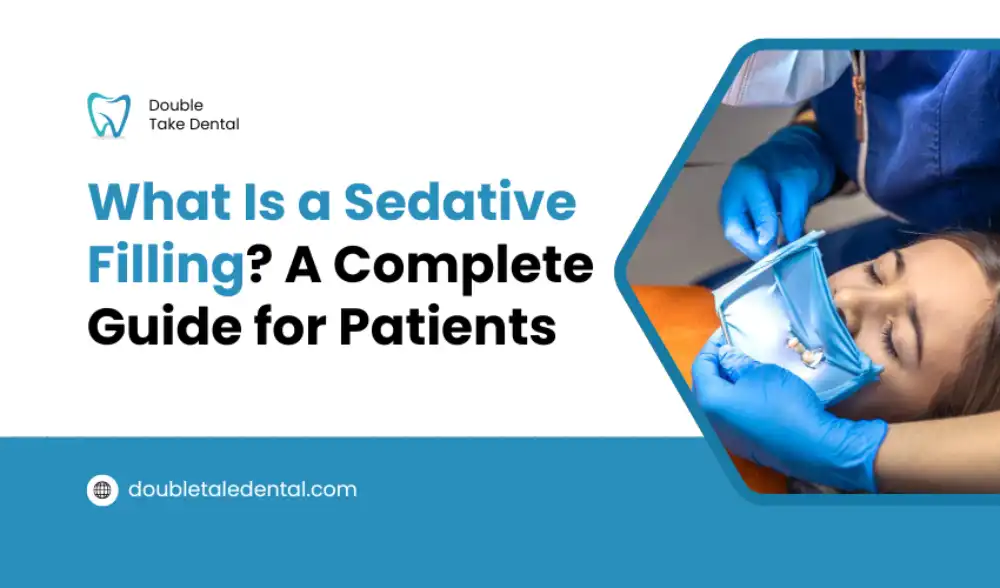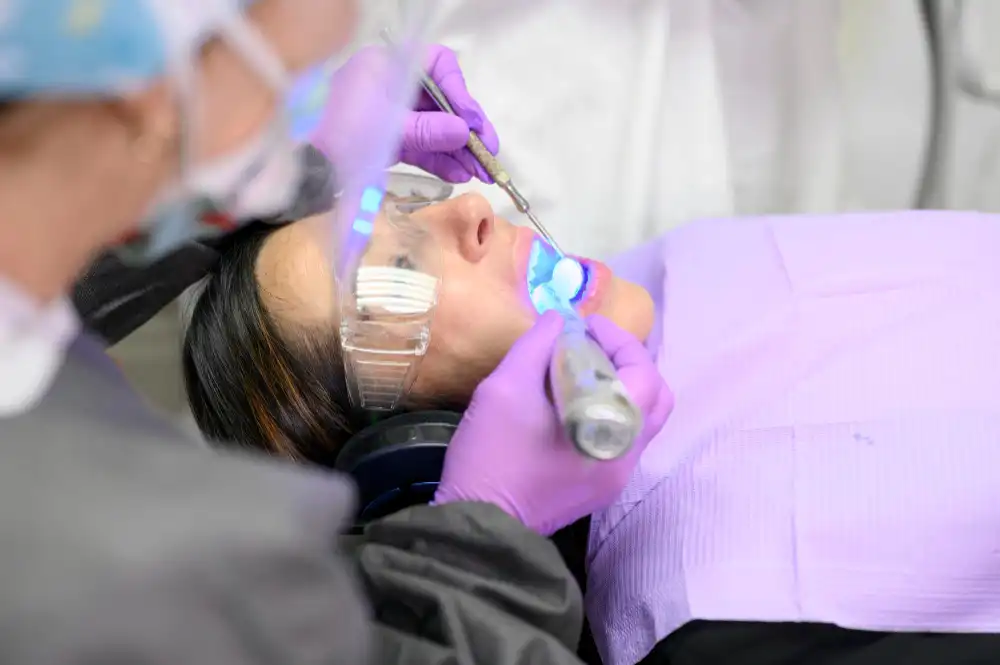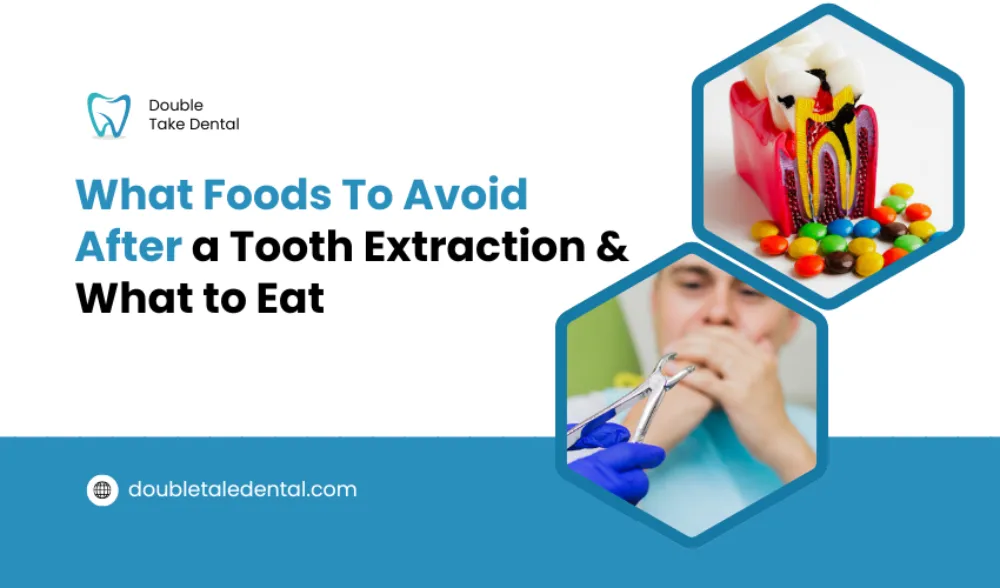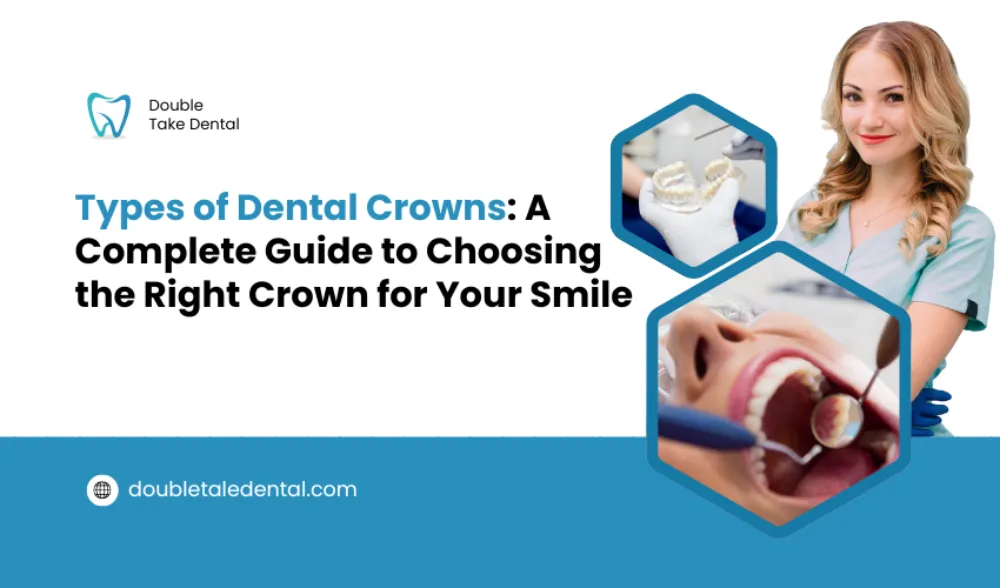What Is a Sedative Filling? A Complete Guide for Patients

Did you know that approximately 25% of adults aged 30 years or older in the U.S. reported experiencing oral pain occasionally or often within the past year? According to the PMC, oral health issues like untreated cavities and sudden toothaches are among the most common reasons people seek emergency dental care.
When a sudden, sharp pain strikes, finding immediate relief becomes the top priority. That is where dental sedation steps in. It is a temporary but highly effective solution designed to ease discomfort, protect the tooth, and buy time until a permanent treatment can be provided.
If you’re wondering, “What is a sedative filling, and do I need one?” You’re in the right place. This guide will explain how sedative fillings work, when your dentist might recommend them, and offer helpful tips on how to care for them at home.
What Is a Sedative Filling?

A sedative filling is a temporary dental restoration designed to relieve pain, reduce inflammation, and protect a damaged tooth until you get permanent dental care treatment.
Unlike standard fillings, which simply restore structure, a sedative dental filling is specially formulated with materials that have therapeutic effects. It is not just about sealing the cavity but about calming the tooth.
Common materials used include zinc oxide-eugenol, which is valued for its soothing effect and anti-inflammatory properties. This sets sedative fillings apart from traditional ones, primarily focusing on longevity rather than comfort.
Why Do You Need a Sedative Filling?

Dentists typically recommend a sedative tooth filling in situations involving:
- Deep cavities that approach the nerve.
- Toothaches caused by pulp inflammation.
- Recent trauma to a tooth.
- Patients who require multiple procedures over time.
- Cases where the permanent treatment must be delayed.
How Sedative Fillings Work
Sedative fillings use therapeutic materials such as:
- Zinc oxide-eugenol (ZOE): Known for its soothing effects on dental pulp.
- Calcium hydroxide: This is sometimes used to stimulate healing.
These materials are placed into the cleaned cavity to create a barrier between the exposed dentin and external stimuli like cold, heat, and pressure.
The soothing compound in the filling reduces nerve sensitivity and can help the tooth begin healing.
Additionally, the physical barrier provided by the filling protects against further bacterial intrusion.
Step-by-Step Process of Getting a Sedative Filling
Getting a sedative dental filling is usually straightforward and relatively quick. Depending on the tooth and the severity of decay, the entire procedure typically takes 30 to 45 minutes.
Here is what to expect:
Step 1: Examination & Diagnosis
Your dentist will examine the affected tooth, often using tools and X-rays. This helps assess the extent of the damage and determine if a sedative filling is the right treatment.
Step 2: Removal of Decay
Once diagnosed, your dentist will gently remove the decayed or damaged part of the tooth. This helps prevent further infection and prepares the area for the sedative filling.
Step 3: Placement of Sedative Material
A soothing, medicated material is carefully placed in the cleaned cavity. This helps reduce inflammation, relieve pain, and support the healing of the tooth’s inner tissue.
Step 4: Temporary Seal
The tooth is then sealed with a temporary filling material to protect it from bacteria, food particles, and further irritation while it heals.
Sedative Filling vs. Temporary Dental Fillings: What Is the Difference?
Not all temporary fillings are created equal. If you are unsure whether your dentist has used a sedative filling or a standard temporary one, this breakdown will help you understand the key differences.
| Feature | Sedative Filling | Temporary Dental Filling |
| Purpose | Provides pain relief and calms the pulp | Serves as a placeholder between dental visits |
| Material | Contains medicated ingredients (e.g., eugenol) | Made from standard non-medicinal dental materials |
| Therapeutic Effect | Yes – designed to soothe inflammation and support healing | No – offers protection but no therapeutic benefit |
| Common Usage | Used when the pulp is inflamed or irritated | Used when treatment is delayed or done in stages |
| Duration | Short-term, but slightly longer than generic temporary fillings | Very short-term until permanent restoration is placed |
How Long Does a Sedative Dental Filling Last?
Sedative fillings are not designed to last forever. Depending on the materials used and the tooth’s condition, they remain effective for an average of a few weeks to a couple of months.
Dentists usually recommend a follow-up appointment within 2 to 4 weeks to reassess the tooth and replace the temporary filling with a permanent restoration. Delaying this step may increase the risk of reinfection or further decay.
Factors that influence their longevity include:
- Location of the tooth (molars may wear faster)
- Chewing habits
- Size of the cavity
- Oral hygiene
Tips to Take Care of Your Sedative Filling at Home
To ensure your sedative dental filling lasts until your next appointment, follow these practical tips:
- Avoid Hard or Sticky Foods: Chewing on nuts, gum, caramel, or crunchy snacks can dislodge or crack the filling. Try to chew on the opposite side of your mouth.
- Brush Gently Around the Area: Maintain your regular brushing routine, but go easy near the treated tooth. Use a soft-bristled toothbrush and avoid vigorous rinsing.
- Skip Flossing Near the Filling (If Advised): In some cases, flossing near a temporary filling can loosen it. Ask your dentist if it is safe to floss around the area.
- Monitor for Sensitivity: Some mild discomfort or sensitivity is normal. But if the pain becomes sharp or worsens over time, do not wait. Call your dentist.
- Look Out for Damage: If you notice any cracks or loose material, or if the filling falls out completely, contact your dental office right away.
- Don’t Miss Your Follow-Up Appointment: Your sedative filling is a temporary solution. To protect your tooth for the long term, make sure you return for the permanent restoration.
Visit Double Take Dental: A Trusted Place for Dental Care
At Double Take Dental in Orem, Utah, we prioritize both your comfort and long-term dental health. Our experienced team incorporates sedative dentistry into our thoughtful approach to pain management and tooth preservation.
Whether you’re experiencing sudden tooth pain or need temporary relief before a more involved dental procedure, our team ensures that every step of your care is delivered with precision and compassion.
With advanced tools and techniques, Double Take Dental offers a full range of services, from emergency dentistry to dental implants, all in one place. We are dedicated to providing personalized care, ensuring that you receive the right treatment at the right time.
Final Thoughts
Sedative fillings are more than just a temporary fix. They help reduce pain, protect the tooth, and support healing. They also give your dentist time to assess the best long-term solution.
Though not permanent, sedative fillings are an important first step in your treatment plan. With proper care and timely follow-up, they can make a real difference in your dental health.
If you’re dealing with sudden tooth pain or need expert care, the team at Double Take Dental is here to help. We’re committed to your comfort, clarity, and long-term results.
FAQs
A: Sedative fillings are often ideal for children or nervous patients. They offer gentle relief without the stress of a full procedure, making the dental experience much more manageable.
A: The sedative filling ADA code is defined by the American Dental Association to document medicated, temporary fillings. These fillings reduce pain and inflammation and are recorded with a specific code for insurance and treatment planning purposes.
A: The sedative filling code (or sedative filling dental code) is used when a filling contains soothing agents like eugenol and is meant to relieve discomfort. In contrast, a temporary filling dental code applies to standard temporary fillings that do not include therapeutic materials.
Recent Posts

What Foods To Avoid After a Tooth Extraction & What to Eat

Types of Dental Crowns: A Complete Guide to Choosing the Right Crown for Your Smile

What to Eat After Root Canal: Recovery Tips & What to Avoid

